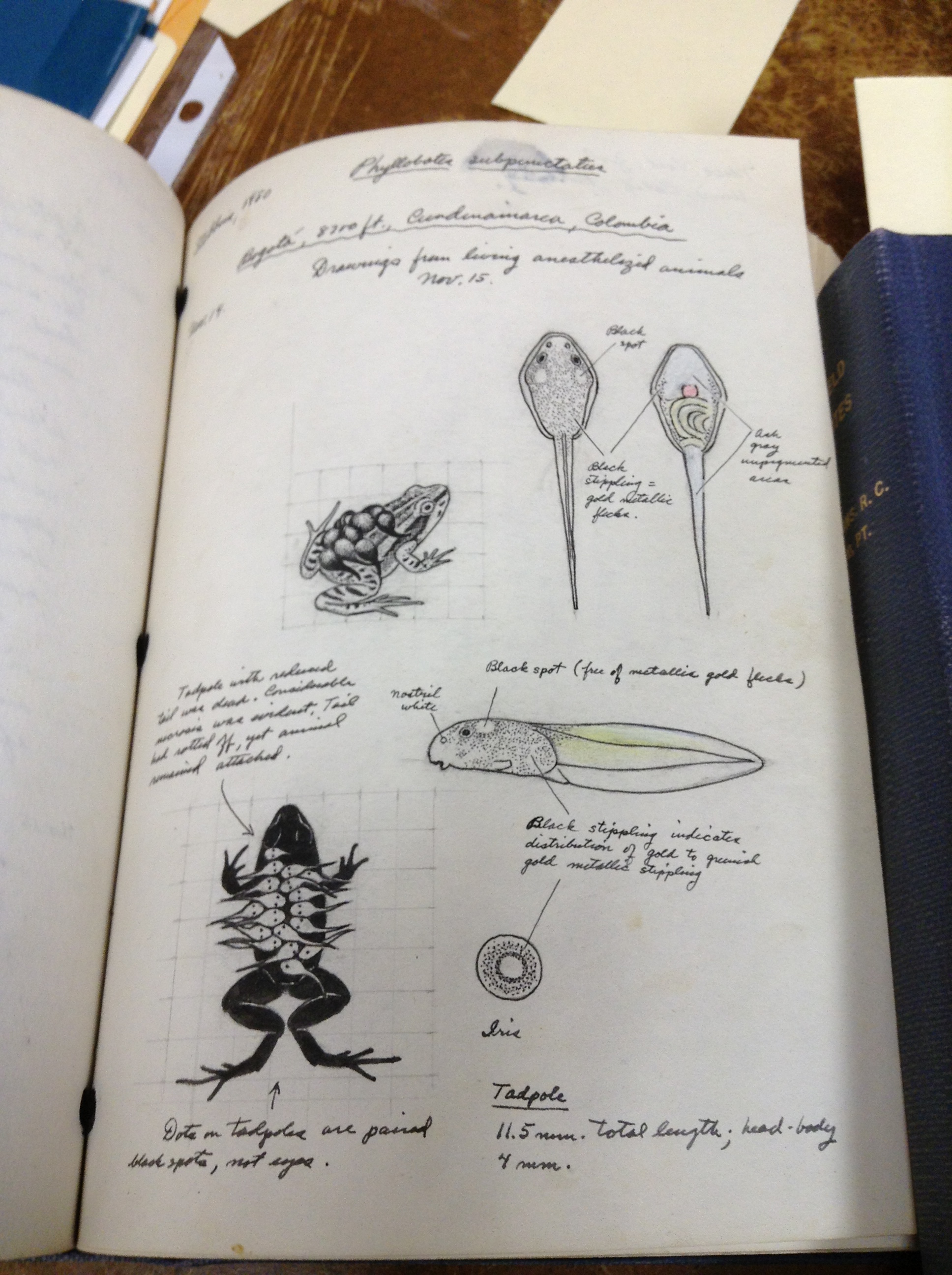Wrriten by undergraduate research apprentice, Amy Moulthrop, Integrative Biology Major.
For the past semester, I’ve been working on the Museum of Vertebrate Zoology archival project, part of an on-going effort to make field notes, research materials, and other miscellaneous archives more available to the general public. Specifically, I’ve been going through the field notes of researchers that are held in the MVZ library, updating the online database with the locations where specimens were collected. As the result, I’ve paged through hundreds of hand-written observations, drawings, species accounts, and journals of scientists who devoted their lives to herpetology and ornithology. The bulk of my time was devoted to Robert Cyril Stebbins’ field notes, as he has over thirty volumes spanning over fifty years. I would like to use this blog post to write about my appreciation of his dedication and passion for biology research.
Robert C. Stebbins is a widely influential herpetologist who published the Field Guide to Western Reptiles and Amphibians. He is currently an Professor Emeritus of Zoology and Curator Emeritus of Herpetology in the Museum of Vertebrate Zoology. His biography is fascinating, starting on a ranch in Chico, California in 1915, living in Los Angeles from the age of nine, then attending UCLA for a degree in Civil Engineering. However, he ended up leaving school for a year and half, returning to obtain a degree in Zoology. Biology became his motivating passion in life, evident through his obtaining teaching credentials to share his knowledge, receiving a PhD on fringe-toed lizards, and beginning a life-long research career. A complete biography can be found in the journal Copeia, published by the American Society of Icthyologists and Herpetologists.
As a biology student still finding my way, I find his journey remarkable. He went from someone who merely enjoyed spending time outdoors, to an engineering student, to one of the most respected herpetologists of our time. He is celebrated for his breakthrough research investigations concerning the pineal gland and the “ring-species” complex, both concepts I learned about in introductory biology courses without ever knowing of Stebbins and his work. In addition to his scientific work, Stebbins is a talented artist. His oil paintings are on the walls of the museum and his sketches in his field notes are intricately detailed. Art has been as crucial to his life as biology and he has been able to integrate his hobby into his career readily. Additionally, he traveled extensively, going from state to state in a few short months, using his sabbatical to do a nation-wide tour, and even keeping journals with hand-written species observations while on vacation with his family. Stebbins never lacked energy or missed an opportunity to conduct field work.
I often ask upper division, graduate students, or working professionals about how they ended up doing the work that they do. You hear much advice about following your heart and devoting yourself to study something you are passionate about. It’s hard to find someone who’s life embodies this ideal as much as Robert Cyril Stebbins. I’m lucky that my field of passion coincides with his, that his drawings, notes, and journals ignite my interest and make me excited for the future. Every person has a different dream, but I know this much. I will graduate from UC Berkeley having obtained experience in field work.

- Robert C. Stebbins, in his earlier days
Citations:
Mahoney, Meredith J. Mulcahy, D. G. “Robert Cyril Stebbins.” Copeia, Volume 3 (September 15, 2006): pp. 563-572. April 24, 2013. http://www.jstor.org/stable/4098723.


Wonderful perspective! Informative and personal, I enjoyed reading this. Thanks!
I agree, really great! It’s important for students to have mentors, and although Stebbins is not a mentor in-person, the fact that he has influenced your thinking and appreciation for biology through his field notes is awesome.